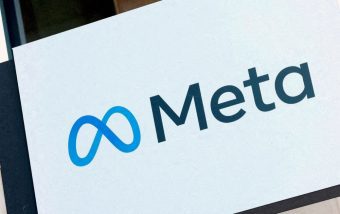What Is 127.0.0.1:49342? Your Internal Device Connectivity Buddy Is Here!
Nov 20, 2025

Nov 20, 2025

Nov 20, 2025

Nov 19, 2025

Nov 19, 2025

Nov 19, 2025

Nov 19, 2025

Nov 19, 2025

Nov 17, 2025
Sorry, but nothing matched your search "". Please try again with some different keywords.


Key Highlights:
The rise of fake profiles is ruining the professional sphere of LinkedIn. More and more fake profiles are being created on a daily basis by the affiliate marketing community. A 2022 report states that LinkedIn removed 21 million fake accounts in 2022.
They do so because Google trusts sites with links to LinkedIn accounts on author bios. Moreover, they use AI-generated fake images as their profile pictures, which can be difficult to detect normally.
This is what LinkedIn has stated regarding the use of AI-generated profile pictures of fake profiles:
With the rise of AI-generated synthetic media and text-to-image generated media, fake profiles have grown more sophisticated. We’ve also found that most members generally cannot visually distinguish real from synthetically-generated faces.
Therefore, LinkedIn has announced that it will use a new software called “AI Image Hunter.” This AI-powered software easily detects AI-generated fake profile pictures, which is a common factor found in most fake LinkedIn profiles.
This is what LinkedIn has stated regarding this new software:
We are constantly working to improve and increase the effectiveness of our anti-abuse defenses to protect the experiences of our members and customers. And as part of our ongoing work, we’ve been partnering with academia to stay one step ahead of new types of abuse tied to fake accounts that are leveraging rapidly evolving technologies like generative AI.
This AI tool composites the images to find similarities. When the AI creates this composition, fake AI-generated images tend to have similar eyes, noses, and mouth shapes. These areas of the face get highlighted in the composition, while the rest of the area remains blurry.
On the other hand, real images do not tend to share similarities. Therefore, their compositions appear entirely blurry.
This is what LinkedIn has stated regarding its new AI Image Hunter:
True positive rate (TPR) is the percentage of synthetic photos that are correctly classified as synthetic. The false positive rate (FPR) is the percentage of real photos that are incorrectly classified as synthetic. Our approach can detect 99.6% (TPR) of synthetic StyleGAN, StyleGAN2, and StyleGAN3 faces while only incorrectly classifying 1% (FPR) of real LinkedIn profile photos as synthetic. For the benchmark results in our research paper, we chose a 1% FPR target because–for real-world applications on a large professional network - it is important for AI-generated image detection models to catch most of the synthetic images while only rarely classifying a real image as synthetic.
But how well does LinkedIn’s new AI Image Hunter work? Here’s what an affiliate marketer testing this tool has said:
As an affiliate marketer, having LinkedIn profiles for my fake persona was a great way to get credibility for my authors. It was beneficial for HARO link-building, as reporters tend to link more often to sites with people with LinkedIn profiles. Over the past few months, 90% of my profiles have been suspended by LinkedIn. Unfortunately, now I must find another method to add credibility to my authors and make them look legit.
It looks like an amazing development for detecting fake profiles on LinkedIn!
More Resources:
Mashum Mollah is the feature writer of SEM and an SEO Analyst at iDream Agency. Over the last 3 years, He has successfully developed and implemented online marketing, SEO, and conversion campaigns for 50+ businesses of all sizes. He is the co-founder of SMM.
View all Posts
What Is 127.0.0.1:49342? Your Internal Device...
Nov 20, 2025
Picuki Alternative: Which One To Choose To Vi...
Nov 20, 2025
Imginn: Is This Private Instagram Browsing To...
Nov 19, 2025
Zoho CRM: Is This Customer Management Tool Wo...
Nov 19, 2025
What Does PMO Mean In Text? Decoding Social M...
Nov 19, 2025

